 Economic growth is closely linked to investment. In the short term, there is a demand-side effect: higher investment, by increasing aggregate demand, creates a multiplier effect. GDP rises and unemployment falls. Over the longer term, higher net investment causes a supply-side effect: industrial capacity and potential output rise. This will be from both the greater quantity of capital and, if new investment incorporates superior technology, from a greater productivity of capital.
Economic growth is closely linked to investment. In the short term, there is a demand-side effect: higher investment, by increasing aggregate demand, creates a multiplier effect. GDP rises and unemployment falls. Over the longer term, higher net investment causes a supply-side effect: industrial capacity and potential output rise. This will be from both the greater quantity of capital and, if new investment incorporates superior technology, from a greater productivity of capital.
One of the biggest determinants of investment is certainty about the future: certainty allows businesses to plan investment. Uncertainty, by contrast, is likely to dampen investment. Investment is for future output and if the future is unknown, why undertake costly investment? After all, the cost of investment is generally recouped over several months or year, not immediately. Uncertainty thus increases the risks of investment.
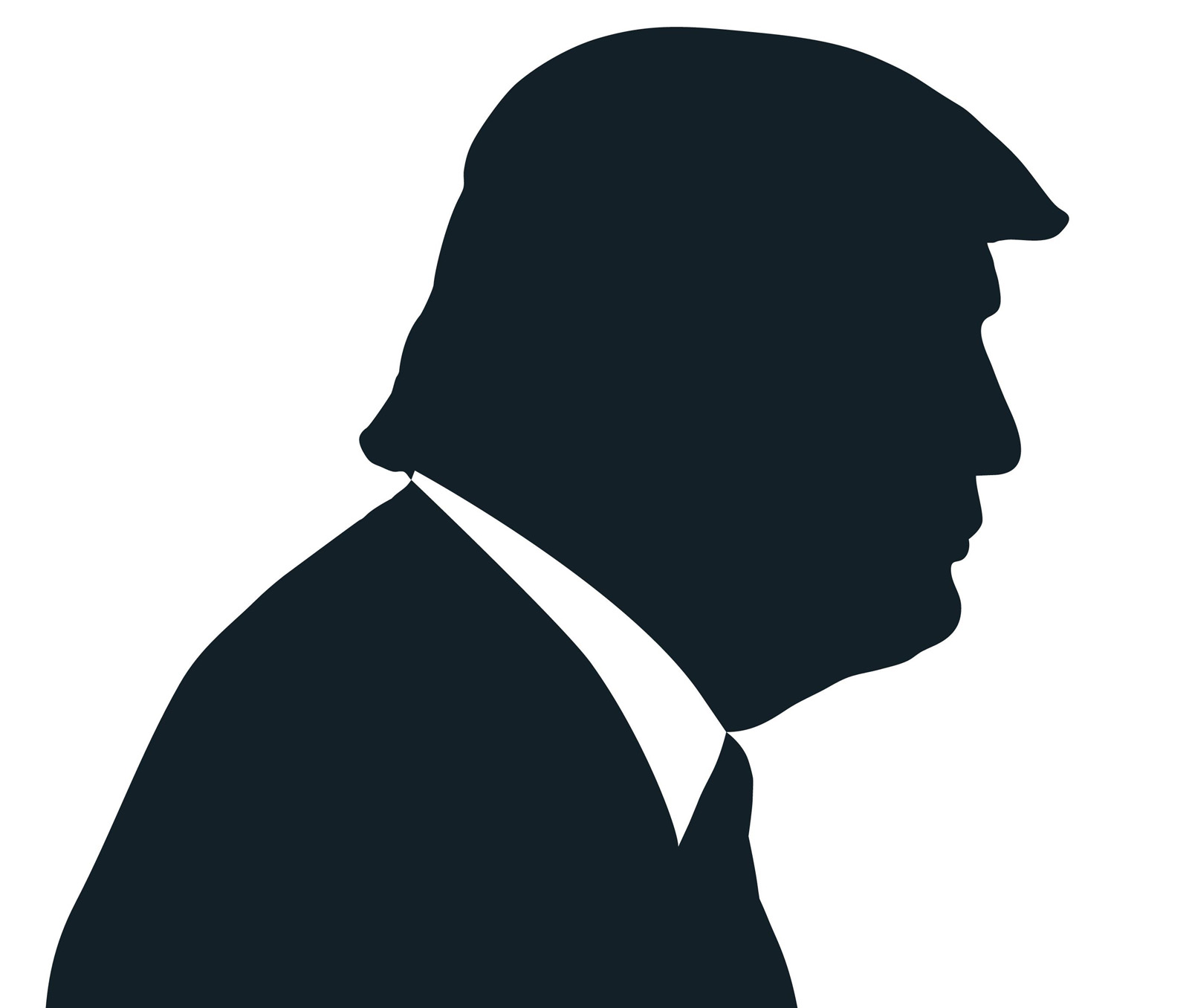 There is currently great uncertainty in the USA and its trading partners. The frequent changes in policy by President Trump are causing a fall in confidence and consequently a fall in investment. The past few weeks have seen large cuts in US government expenditure as his administration seeks to dismantle the current structure of government. The businesses supplying federal agencies thus face great uncertainty about future contracts. Laid-off workers will be forced to cut their spending, which will have knock-on effect on business, who will cut employment and investment as the multiplier and accelerator work through.
There is currently great uncertainty in the USA and its trading partners. The frequent changes in policy by President Trump are causing a fall in confidence and consequently a fall in investment. The past few weeks have seen large cuts in US government expenditure as his administration seeks to dismantle the current structure of government. The businesses supplying federal agencies thus face great uncertainty about future contracts. Laid-off workers will be forced to cut their spending, which will have knock-on effect on business, who will cut employment and investment as the multiplier and accelerator work through.
There are also worries that the economic chaos caused by President Trump’s frequent policy changes will cause inflation to rise. Higher inflation will prompt the Federal Reserve to raise interest rates. This, in turn, will increase the cost of borrowing for investment.
Tariff uncertainty
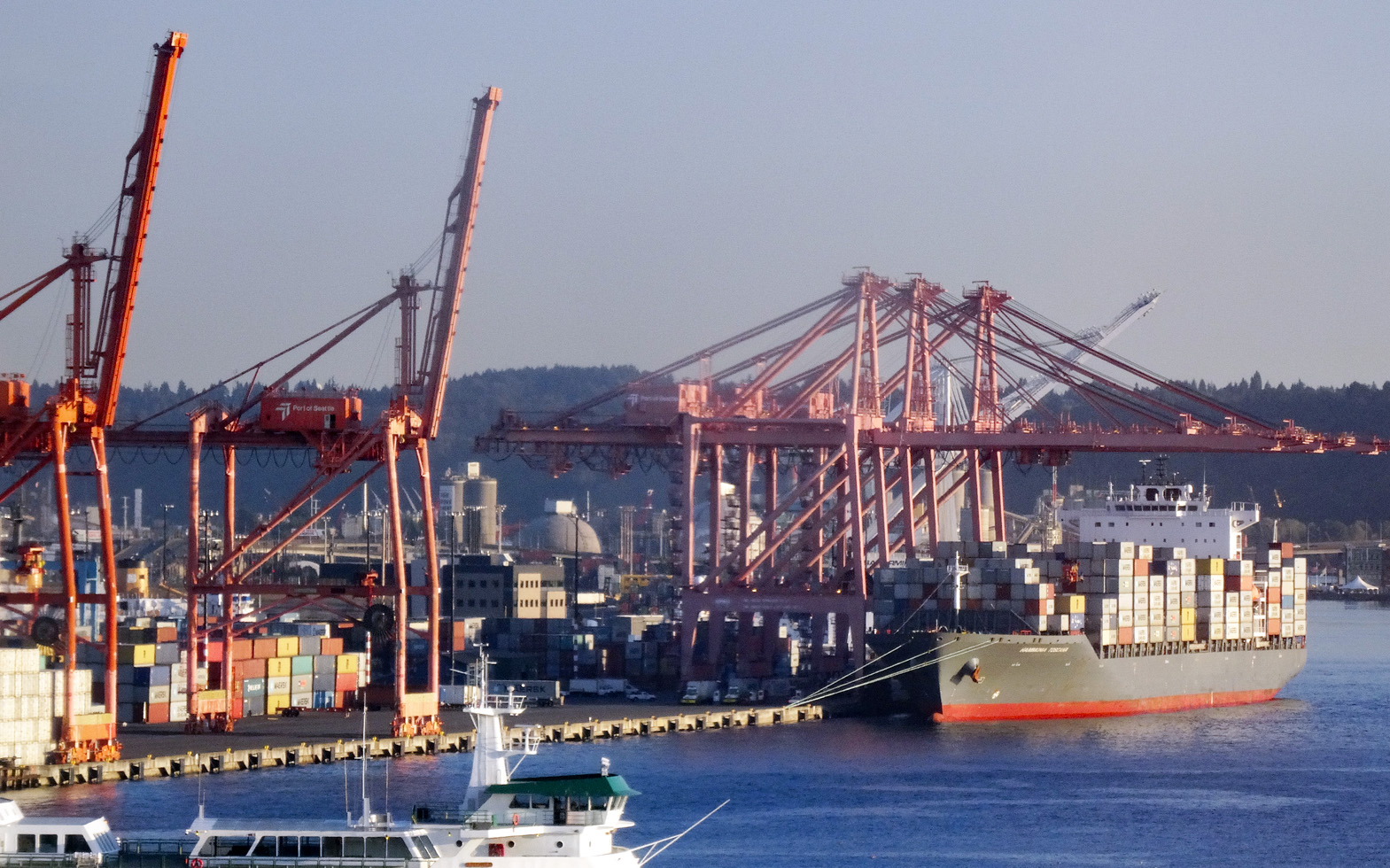 Perhaps the biggest uncertainty for business concerns the imposition of tariffs. Many US businesses rely on imports of raw materials, components, equipment, etc. Imposing tariffs on imports raises business costs. But this will vary from firm to firm, depending on the proportion of their inputs that are imported. And even when the inputs are from other US companies, those companies may rely on imports and thus be forced to raise prices to their customers. And if, in retaliation, other countries impose tariffs on US goods, this will affect US exporters and discourage them from investing.
Perhaps the biggest uncertainty for business concerns the imposition of tariffs. Many US businesses rely on imports of raw materials, components, equipment, etc. Imposing tariffs on imports raises business costs. But this will vary from firm to firm, depending on the proportion of their inputs that are imported. And even when the inputs are from other US companies, those companies may rely on imports and thus be forced to raise prices to their customers. And if, in retaliation, other countries impose tariffs on US goods, this will affect US exporters and discourage them from investing.
For many multinational companies, whether based in the USA or elsewhere, supply chains involve many countries. New tariffs will force them to rethink which suppliers to use and where to locate production. The resulting uncertainty can cause them to delay or cancel investments.
Uncertainty has also been caused by the frequent changes in the planned level of tariffs. With the Trump administration using tariffs as a threat to get trading partners to change policy, the threatened tariff rates have varied depending on how trading partners have responded. There has also been uncertainty on just how the tariff policy will be implemented, making it more difficult for businesses to estimate the effect on them.
Then there are serious issues for the longer term. Other countries will be less willing to sign trade deals with the USA if they will not be honoured. Countries may increasingly look to diverting trade from the USA to other countries.
Video
Articles
- Trump’s erratic trade policies are baffling businesses, threatening investment and economic growth
Associated Press, Paul Wiseman, Anne D’innocenzio and Mae Anderson (6/3/25)
- The world is beginning to tire of Trump’s whiplash leadership
CNN, Stephen Collinson (6/3/25)
- US stocks slide and Nasdaq enters correction as chaos over Trump’s tariffs intensifies
CNN, John Towfighi (6/3/25)
- Trump’s Tariffs And Trade: Uncertainty, Chaos Or Brilliance?
Forbes, Mike Patton (6/3/25)
- How Trump’s second term might affect the market and your finances
The Conversation, Art Durnev (4/3/25)
- US corporate bond investors cautiously navigate trade war uncertainty
Reuters, Matt Tracy (6/3/25)
 This week in Trumponomics: Playing chicken with markets
This week in Trumponomics: Playing chicken with marketsYahoo Finance, Rick Newman (8/3/25)
- Measuring fear: What the VIX reveals about market uncertainty
The FRED Blog, Aakash Kalyani (13/2/25)
- Trump shrugs off stock market slump, but economic warning signs loom
The Conversation, Conor O’Kane (17/3/25)
Data
Questions
- Find out what tariffs have been proposed, imposed and changed since Donald Trump came to office on 20 January 2025.
- In what scenario might US investment be stimulated by Donald Trump’s policies?
- What countries’ economies have gained or are set to gain from Donald Trump’s policies?
- What is the USMCA agreement? Do Donald Trump’s policies break this agreement?
- Find out and explain what has happened to the US stock market since January 2025. How do share prices affect business investment?
- Which sector’s shares have risen and which have fallen?
- Using the Data link above, find out what has been happening to the US Policy Uncertainty Index since Donald Trump was elected and explain particular spikes in the index. Is this mirrored in the global Policy Uncertainty Index?
- Are changes in the Policy Uncertainty Index mirrored in the World Uncertainty Index (WUI) and the CBOE Volatility Index: VIX?
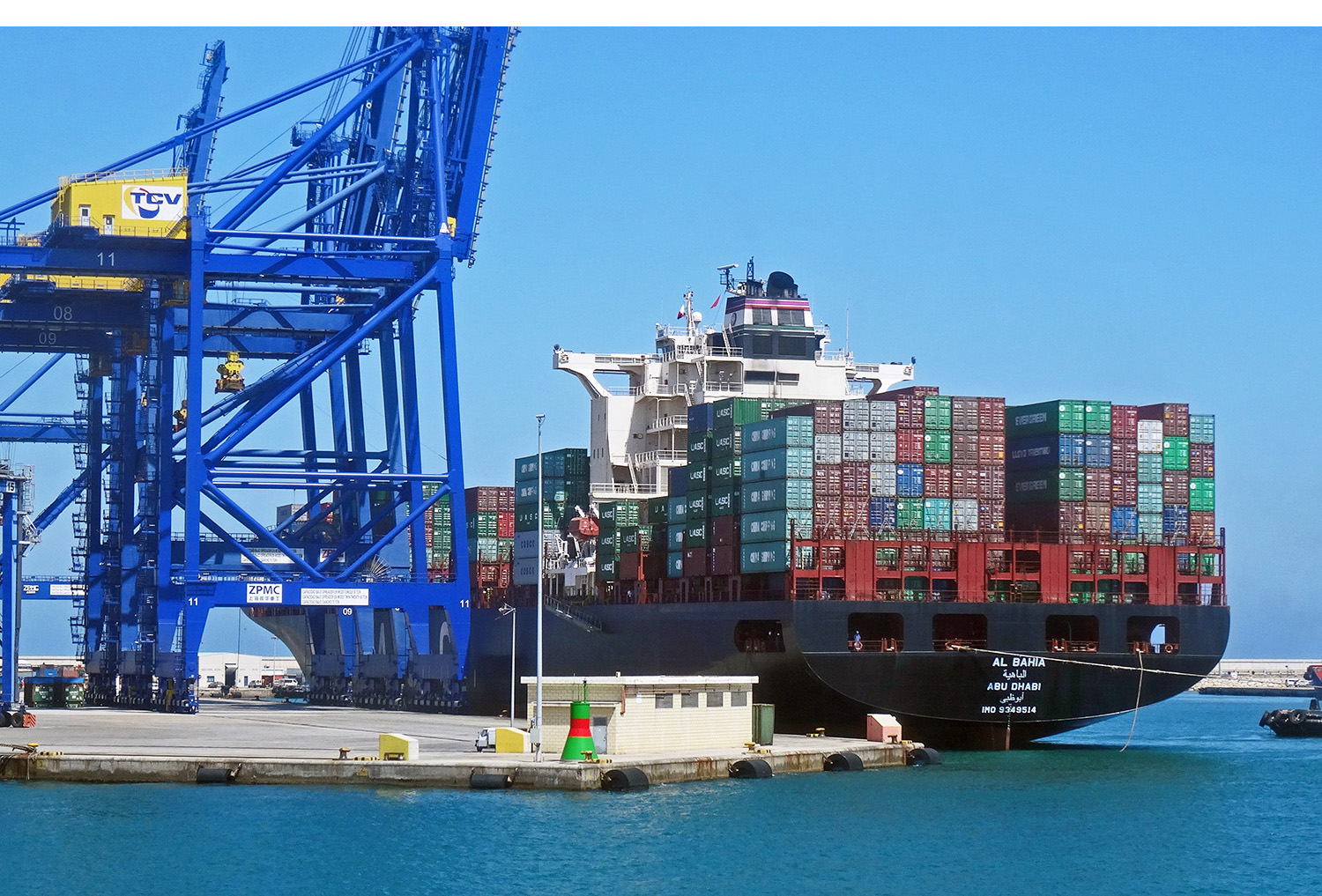 In an interview with Joe Rogan for his podcast, The Joe Rogan Experience, just before the US election, Donald Trump stated that, “To me, the most beautiful word – and I’ve said this for the last couple of weeks – in the dictionary today and any is the word ‘tariff’. It’s more beautiful than love; it’s more beautiful than anything. It’s the most beautiful word. This country can become rich with the use, the proper use of tariffs.”
In an interview with Joe Rogan for his podcast, The Joe Rogan Experience, just before the US election, Donald Trump stated that, “To me, the most beautiful word – and I’ve said this for the last couple of weeks – in the dictionary today and any is the word ‘tariff’. It’s more beautiful than love; it’s more beautiful than anything. It’s the most beautiful word. This country can become rich with the use, the proper use of tariffs.”
President-elect Trump has stated that he will impose tariffs on imports of 10% or 20%, with 60% and 100% tariffs on imports from China and Mexico, respectively. This protection for US industries, combined with lighter regulation, will, he claims, provide a stimulus to the economy and help create jobs. The revenues will also help to reduce America’s budget deficit.
But it is not that straightforward.
Problems with tariffs for the USA
 Imposing tariffs is likely to reduce international trade. But international trade brings net benefits, which are distributed between the participants according to the terms of trade. This is the law of comparative advantage.
Imposing tariffs is likely to reduce international trade. But international trade brings net benefits, which are distributed between the participants according to the terms of trade. This is the law of comparative advantage.
In the simple two-country case, the law states that, provided the opportunity costs of producing various goods differ between the two countries, both of them can gain from mutual trade if they specialise in producing (and exporting) those goods that have relatively low opportunity costs compared with the other country. The total production and consumption of the two countries will be higher.
So if the USA has a comparative advantage in various manufactured products and a trading partner has a comparative advantage in tropical food products, such as coffee or bananas, both can gain by specialisation and trade.
If tariffs are imposed and trade is thereby reduced between the USA and its trading partners, there will be a net loss, as production will switch from lower-cost production to higher-cost production. The higher costs of less efficient production in the USA will lead to higher prices for those goods than if they were imported.
 At the same time, goods that are still imported will be more expensive as the price will include the tariff. Some of this may be borne by the importer, meaning that only part of the tariff is passed on to the consumer. The incidence of the tariff between consumer and importer will depend on price elasticities of demand and supply. Nevertheless, imports will still be more expensive, allowing the domestically-produced substitutes to rise in price too, albeit probably by not so much. According to work by Kimberly Clausing and Mary E Lovely for the Peterson Institute (see link in Articles below), Trump’s proposals to raise tariffs would cost the typical American household over $2600 a year.
At the same time, goods that are still imported will be more expensive as the price will include the tariff. Some of this may be borne by the importer, meaning that only part of the tariff is passed on to the consumer. The incidence of the tariff between consumer and importer will depend on price elasticities of demand and supply. Nevertheless, imports will still be more expensive, allowing the domestically-produced substitutes to rise in price too, albeit probably by not so much. According to work by Kimberly Clausing and Mary E Lovely for the Peterson Institute (see link in Articles below), Trump’s proposals to raise tariffs would cost the typical American household over $2600 a year.
The net effect will be a rise in inflation – at least temporarily. Yet one of Donald Trump’s pledges is to reduce inflation. Higher inflation will, in turn, encourage the Fed to raise interest rates, which will dampen investment and economic growth.
Donald Trump tends to behave transactionally rather than ideologically. He is probably hoping that a rapid introduction of tariffs will then give the USA a strong bargaining position with foreign countries to trade more fairly. He is also hoping that protecting US industries by the use of tariffs, especially when coupled with deregulation, will encourage greater investment and thereby faster growth.
Much will depend on how other countries respond. If they respond by raising tariffs on US exports, any gain to industries from protection from imports will be offset by a loss to exporters.
A trade war, with higher tariffs, will lead to a net loss in global GDP. It is a negative sum game. In such a ‘game’, it is possible for one ‘player’ (country) to gain, but the loss to the other players (countries) will be greater than that gain.
 Donald Trump is hoping that by ‘winning’ such a game, the USA could still come out better off. But the gain from higher investment, output and employment in the protected industries would have to outweigh the losses to exporting industries and from higher import prices.
Donald Trump is hoping that by ‘winning’ such a game, the USA could still come out better off. But the gain from higher investment, output and employment in the protected industries would have to outweigh the losses to exporting industries and from higher import prices.
The first Trump administration (2017–21), as part of its ‘America First’ programme, imposed large-scale tariffs on Chinese imports and on steel and aluminium from across the world. There was wide-scale retaliation by other countries with tariffs imposed on a range of US exports. There was a net loss to world income, including US GDP.
Problems with US tariffs for the rest of the world
The imposition of tariffs by the USA will have considerable effects on other countries. The higher the tariffs and the more that countries rely on exports to the USA, the bigger will the effect be. China and Mexico are likely to be the biggest losers as they face the highest tariffs and the USA is a major customer. In 2023, US imports from China were worth $427bn, while US exports to China were worth just $148bn – only 34.6% of the value of imports. The percentage is estimated to be even lower for 2024 at around 32%. In 2023, China’s exports to the USA accounted for 12.6% of its total exports; Mexico’s exports to the USA accounted for 82.7% of its total exports.
It is possible that higher tariffs could be extended beyond China to other Asian countries, such as Vietnam, South Korea, Taiwan, India and Indonesia. These countries typically run trade surpluses with the USA. Also, many of the products from these countries include Chinese components.
As far as the UK is concerned, the proposed tariffs would cause significant falls in trade. According to research by Nicolò Tamberi at the University of Sussex (see link below in Articles):
The UK’s exports to the world could fall by £22 billion (–2.6%) and imports by £1.4 (–0.16%), with significant variations across sectors. Some sectors, like fishing and petroleum, are particularly hard-hit due to their high sensitivity to tariff changes, while others, such as textiles, benefit from trade diversion as the US shifts demand away from China.
Other badly affected sectors would include mining, pharmaceuticals, finance and insurance, and business services. The overall effect, according to the research, would be to reduce UK output by just under 1%.
Countries are likely to respond to US tariffs by imposing their own tariffs on US imports. World Trade Organization rules permit the use of retaliatory tariffs equivalent to those imposed by the USA. The more aggressive the resulting trade war, the bigger would be the fall in world trade and GDP.
The EU is planning to negotiate with Trump to avoid a trade war, but officials are preparing the details of retaliatory measures should the future Trump administration impose the threatened tariffs. The EU response is likely to be strong.
Articles
 The Most Beautiful Word In The Dictionary: Tariffs
The Most Beautiful Word In The Dictionary: TariffsYouTube, Joe Rogan and Donald Trump
- The exact thing that helped Trump win could become a big problem for his presidency
CNN, Matt Egan (7/11/24)
- Trump’s New Trade War With China Is Coming
Newsweek, Micah McCartney (9/11/24)
- Trump tariff threat looms large on several Asian countries – not just China – says Goldman Sachs
CNBC, Lee Ying Shan (11/11/24)
- Trump’s bigger tariff proposals would cost the typical American household over $2,600 a year
Peterson Institute for International Economics, Kimberly Clausing and Mary E Lovely (21/8/24)
- More tariffs, less red tape: what Trump will mean for key global industries
The Guardian, Jasper Jolly, Dan Milmo, Jillian Ambrose and Jack Simpson (7/11/24)
- Trump tariffs would halve UK growth and push up prices, says thinktank
The Guardian, Larry Elliott (6/11/24)
- China is trying to fix its economy – Trump could derail those plans
BBC News, João da Silva (8/11/24)
- Trump tariffs could cost UK £22bn of exports
BBC News, Faisal Islam & Tom Espiner (8/11/24)
- Trump to target EU over UK in trade war as he wants to see ‘successful Brexit’, former staffer claims
Independent, Millie Cooke (11/11/24)
- EU’s trade war nightmare gets real as Trump triumphs
Politico, Camille Gijs (6/11/24)
- Will Trump impose his tariffs? They could reduce the UK’s exports by £22 billion.
Centre for Inclusive Trade Policy, University of Sussex, Nicolò Tamberi (8/11/24)
- Three possible futures for the global economy if Trump brings in new trade tariffs
The Conversation, Agelos Delis and Sami Bensassi (17/12/24)
Questions
- Explain why, according to the law of comparative advantage, all countries can gain from trade.
- In what ways may the imposition of tariffs benefit particular sections of an economy?
- Is it in countries’ interests to retaliate if the USA imposes tariffs on their exports to the USA?
- Why is a trade war a ‘negative sum game’?
- Should the UK align with the EU in resisting President-elect Trump’s trade policy or should it seek independently to make a free-trade deal with the USA? is it possible to do both?
- What should China do in response to US threats to impose tariffs of 60% or more on Chinese imports to the USA?
 Economists are often criticised for making inaccurate forecasts and for making false assumptions. Their analysis is frequently dismissed by politicians when it contradicts their own views.
Economists are often criticised for making inaccurate forecasts and for making false assumptions. Their analysis is frequently dismissed by politicians when it contradicts their own views.
But is this fair? Have economists responded to the realities of the global economy and to the behaviour of people, firms, institutions and government as they respond to economic circumstances? The answer is a qualified yes.
Behavioural economics is increasingly challenging the simple assumption that people are ‘rational’, in the sense that they maximise their self interest by weighing up the marginal costs and benefits of alternatives open to them. And macroeconomic models are evolving to take account of a range of drivers of global growth and the business cycle.
 The linked article and podcast below look at the views of 2019 Nobel Prize-winning economist Esther Duflo. She has challenged some of the traditional assumptions of economics about the nature of rationality and what motivates people. But her work is still very much in the tradition of economists. She examines evidence and sees how people respond to incentives and then derives policy implications from the analysis.
The linked article and podcast below look at the views of 2019 Nobel Prize-winning economist Esther Duflo. She has challenged some of the traditional assumptions of economics about the nature of rationality and what motivates people. But her work is still very much in the tradition of economists. She examines evidence and sees how people respond to incentives and then derives policy implications from the analysis.
Take the case of the mobility of labour. She examines why people who lose their jobs may not always move to a new one if it’s in a different town. Partly this is for financial reasons – moving is costly and housing may be more expensive where the new job is located. Partly, however, it is for reasons of identity. Many people are attached to where they currently live. They may be reluctant to leave family and friends and familiar surroundings and hope that a new job will turn up – even if it means a cut in wages. This is not irrational; it just means that people are driven by more than simply wages.
Duflo is doing what economists typically do – examining behaviour in the light of evidence. In her case, she is revisiting the concept of rationality to take account of evidence on what motivates people and the way they behave.
 In the light of workers’ motivation, she considers the implications for the gains from trade. Is free trade policy necessarily desirable if people lose their jobs because of cheap imports from China and other developing countries where labour costs are low?
In the light of workers’ motivation, she considers the implications for the gains from trade. Is free trade policy necessarily desirable if people lose their jobs because of cheap imports from China and other developing countries where labour costs are low?
The answer is not a clear yes or no, as import-competing industries are only part of the story. If protectionist policies are pursued, other countries may retaliate with protectionist policies themselves. In such cases, people working in the export sector may lose their jobs.
She also looks at how people may respond to a rise or cut in tax rates. Again the answer is not clear cut and an examination of empirical evidence is necessary to devise appropriate policy. Not only is there an income and substitution effect from tax changes, but people are motivated to work by factors other than take-home pay. Likewise, firms are encouraged to invest by factors other than the simple post-tax profitability of investment.
Podcast
Article
Questions
- In traditional ‘neoclassical’ economics, what is meant by ‘rationality’ in terms of (a) consumer behaviour; (b) producer behaviour?
- How might the concept of rationality be expanded to take into account a whole range of factors other than the direct costs and benefits of a decision?
- What is meant by bounded rationality?
- What would be the effect on workers’ willingness to work more or fewer hours as a result of a cut in the marginal income tax rate if (a) the income effect was greater than the substitution effect; (b) the substitution effect was greater than the income effect? Would your answers to (a) and (b) be the opposite in the case of a rise in the marginal income tax rate?
- Give some arguments that you consider to be legitimate for imposing controls on imports in (a) the short run; (b) the long run. How might you counter these arguments from a free-trade perspective?
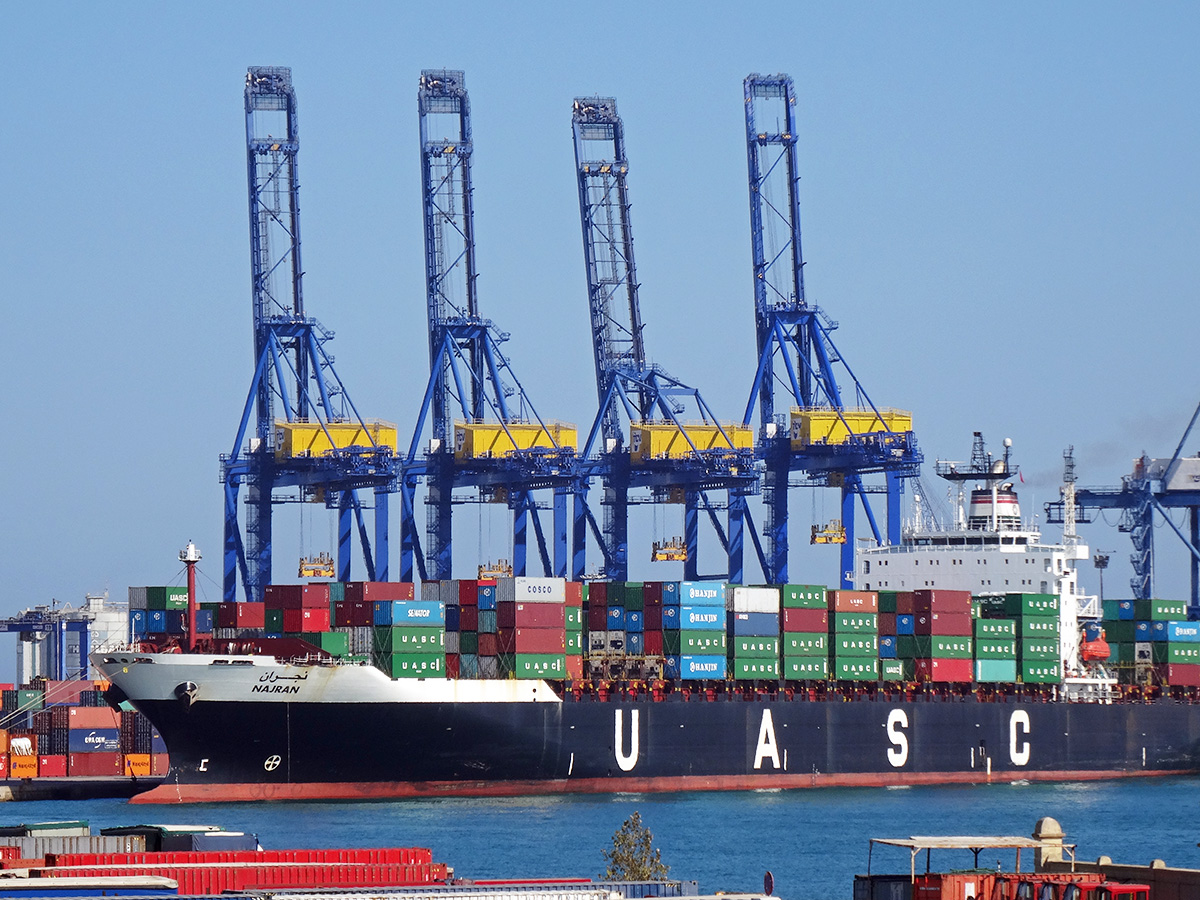 Donald Trump has threatened to pull out of the World Trade Organization. ‘If they don’t shape up, I would withdraw from the WTO,’ he said. He argues that the USA is being treated very badly by the WTO and that the organisation needs to ‘change its ways’.
Donald Trump has threatened to pull out of the World Trade Organization. ‘If they don’t shape up, I would withdraw from the WTO,’ he said. He argues that the USA is being treated very badly by the WTO and that the organisation needs to ‘change its ways’.
Historically, the USA has done relatively well compared with other countries in trade disputes brought to the WTO. However, President Trump does not like being bound by an international organisation which prohibits the unilateral imposition of tariffs that are not in direct retaliation against a trade violation by other countries. Such tariffs have been imposed by the Trump administration on steel and aluminium imports. This has led to retaliatory tariffs on US imports by the EU, China and Canada – something that is permitted under WTO rules.
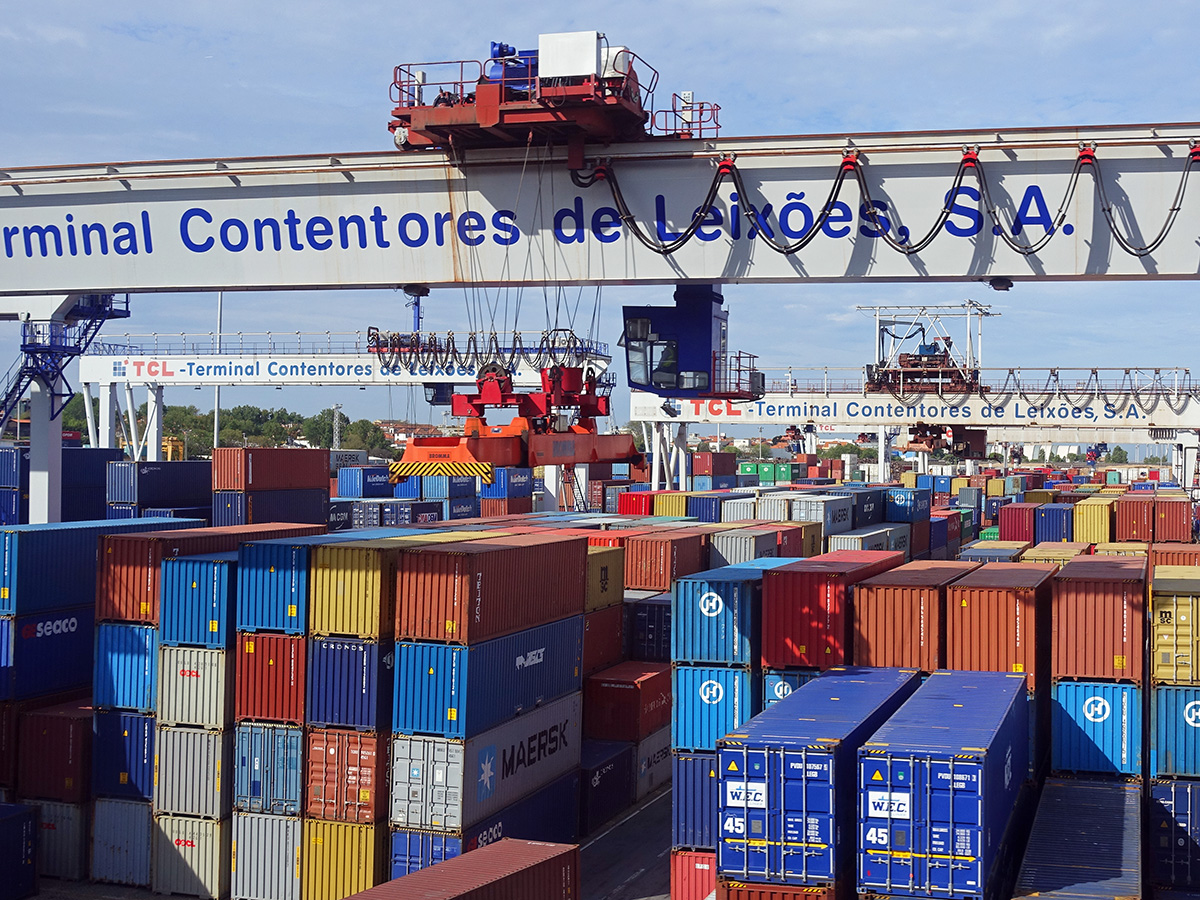 Whether or not the USA does withdraw from the WTO, Trump’s threats bring into question the power of the WTO and other countries’ compliance with WTO rules. With the rise in protectionist sentiments around the world, the power of the WTO would seem to be on the wane.
Whether or not the USA does withdraw from the WTO, Trump’s threats bring into question the power of the WTO and other countries’ compliance with WTO rules. With the rise in protectionist sentiments around the world, the power of the WTO would seem to be on the wane.
Even if the USA does not withdraw from the WTO, it is succeeding in weakening the organisation. Appeals cases have to be heard by an ‘appellate body’, consisting of at least three judges drawn from a list of seven, each elected for four years. But the USA has the power to block new appointees – and has done so. As Larry Elliott states in the first article below:
The list of judges is already down to four and will be down to the minimum of three when the Mauritian member, Shree Baboo Chekitan Servansing, retires at the end of September. Two more members will go by the end of next year, at which point the appeals process will come to a halt.
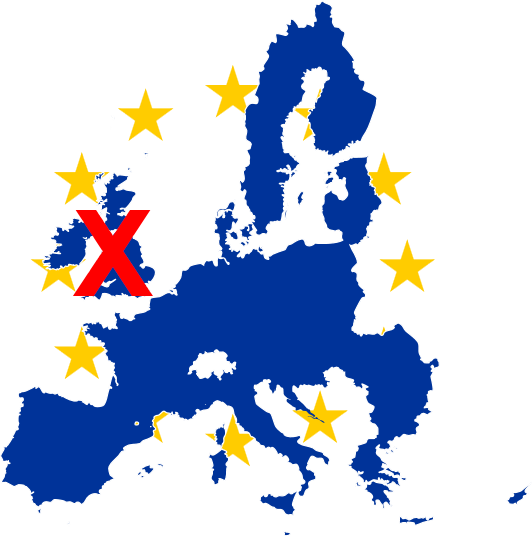 This raises the question of the implication of a ‘no-deal’ Brexit – something that seems more likely as the UK struggles to reach a trade agreement with the EU. Leaving without a deal would mean ‘reverting to WTO rules’. But if these rules are being ignored by powerful countries such as the USA and possibly China, and if the appeals procedure has ground to a halt, this could leave the UK without the safety net of international trade rules. Outside the EU – the world’s most powerful trade bloc – the UK could find itself having to accept poor trade terms with the USA and other large countries.
This raises the question of the implication of a ‘no-deal’ Brexit – something that seems more likely as the UK struggles to reach a trade agreement with the EU. Leaving without a deal would mean ‘reverting to WTO rules’. But if these rules are being ignored by powerful countries such as the USA and possibly China, and if the appeals procedure has ground to a halt, this could leave the UK without the safety net of international trade rules. Outside the EU – the world’s most powerful trade bloc – the UK could find itself having to accept poor trade terms with the USA and other large countries.
Articles
Information
Questions
- Explain the WTO’s ‘Most-favoured-nation (MFN)’ clause. How would this affect trade deals between the UK and the EU?
- Would the trade deals that the EU has negotiated with other countries, such as Japan, be available to the UK after leaving the EU?
- Demonstrate how, according to the law of comparative advantage, all countries can gain from trade.
- In what ways is the USA likely to gain and lose from the imposition of tariffs on steel and aluminium?
- How could a country that supports free trade ever support the imposition of tariffs?
- Why are tariffs not the most serious restriction on trade?
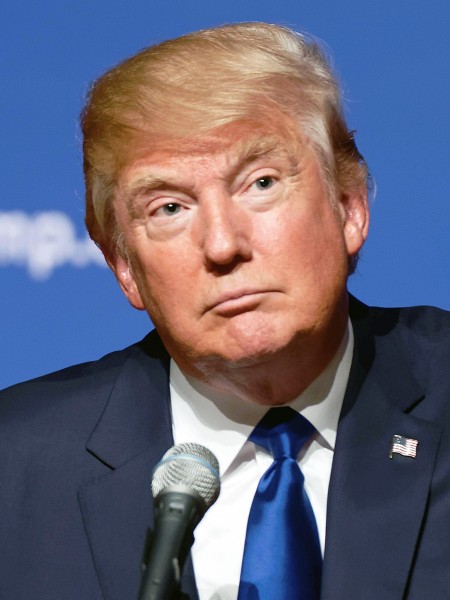 President-elect Donald Trump has blamed free trade for much of America’s economic problems. He argues that cheap imports from China, partly from an undervalued yuan, have led to a loss of jobs and to large-scale income flows from the USA to China. “They have taken our jobs; they have taken our money; and on top of that they have loaned the money to us and we actually pay them interest now on money,” he claimed to The Economist.
President-elect Donald Trump has blamed free trade for much of America’s economic problems. He argues that cheap imports from China, partly from an undervalued yuan, have led to a loss of jobs and to large-scale income flows from the USA to China. “They have taken our jobs; they have taken our money; and on top of that they have loaned the money to us and we actually pay them interest now on money,” he claimed to The Economist.
And it’s not just trade with China that he criticises. He sees cheap imports from developing countries generally as undermining US jobs. The solution he advocates is the imposition of tariffs on imports that threaten US jobs and scrapping, or fundamentally renegotiating, trade deals.
He refers to NAFTA – the North American Free Trade Agreement with Canada and Mexico – as the worst trade deal in US history and blames it for the loss of thousands of US manufacturing jobs. He has said that he will demand better terms from Mexico and Canada. If they don’t agree to them, he’d pull the USA out of NAFTA altogether.
A more recent trade agreement is the Trans-Pacific Partnership (TPP) with 11 other Pacific rim countries (but not including China). The agreement was signed on 4 February 2016, but is awaiting ratification from member countries. Amongst other things, the agreement cuts over 18,000 tariffs. Donald Trump has said that he would block the deal, even though it would lead to the elimination of tariffs on most US manufactured and agricultural products exported to the other countries. He argues that it would lead to a large-scale loss of US jobs from cheap imports.
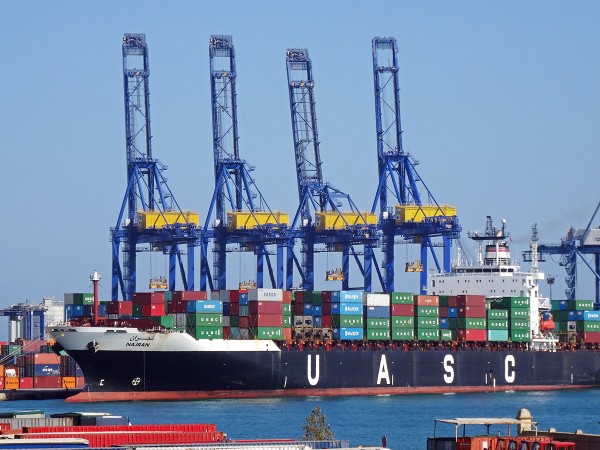 Another major trade deal criticised by Trump is that being negotiated between the USA and the EU – the Transatlantic Trade and Investment Partnership (TTIP). It has already faced fierce opposition in Europe, with many fearing that it would give too much power to US corporations in their operations in Europe. With the opposition from Trump, it looks unlikely that the agreement will be signed, even in an amended form.
Another major trade deal criticised by Trump is that being negotiated between the USA and the EU – the Transatlantic Trade and Investment Partnership (TTIP). It has already faced fierce opposition in Europe, with many fearing that it would give too much power to US corporations in their operations in Europe. With the opposition from Trump, it looks unlikely that the agreement will be signed, even in an amended form.
So is this more protectionist stance by Donald Trump in America’s interests? The main argument against restricting imports is that people generally in the USA would be poorer. This is the prediction from the law of comparative advantage. Trade allows a country to consume beyond its production possibility curve by specialising in the production of goods with relatively low opportunity costs and importing goods which would have had a higher opportunity cost if they were produced domestically (see, for example, Economics, 9th edition, pages 711–4). By imposing tariffs or other restrictions on cheap imports, consumers would end up paying more for such goods if they now have to be produced domestically. Cheap Chinese t-shirts would be replaced by expensive US ones. Real US incomes would be lower.
Another danger of pursuing protectionist policies is that other countries might retaliate. Trade wars might result, with the world ending up poorer.
Then there is a problem of locating products. It is not a simple question of saying a product is made in the USA or elsewhere. With complex modern supply chains, many products use components and services, such as design and logistics, from many different countries. Imposing restrictions on imports may lead to damage to products which are seen as US products.
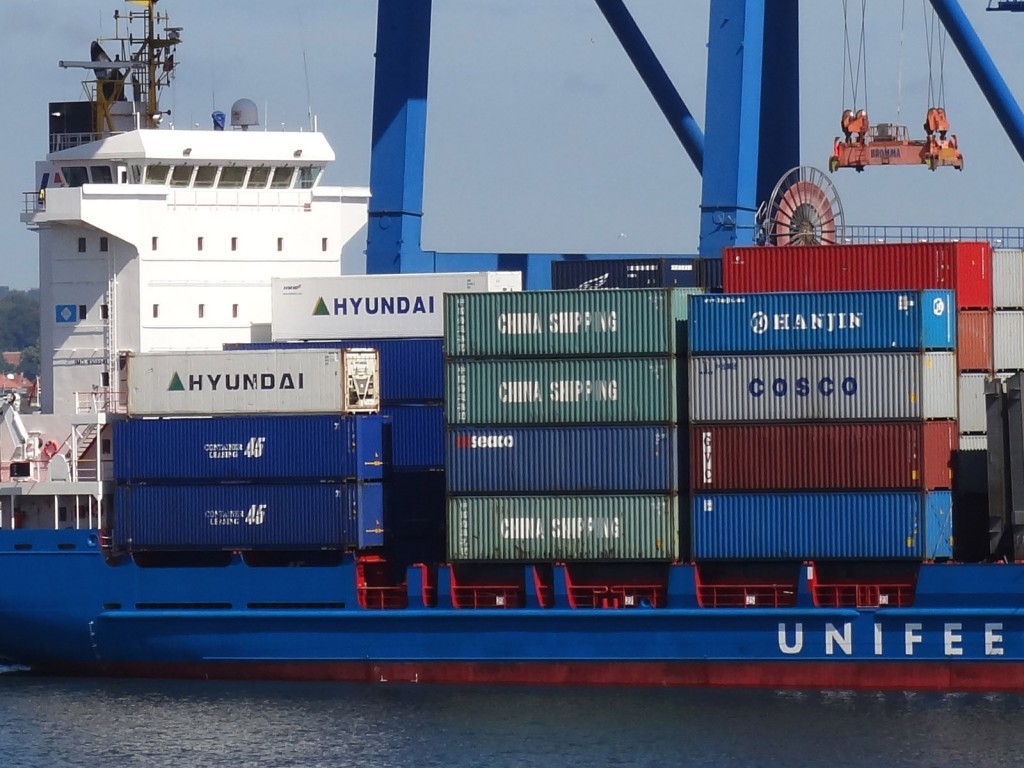 An open trade policy, by contrast, not only leads to higher consumption, it stimulates economic growth and the extra competition it creates improves domestic productivity. As the pro-free trade article by Graeme Leach, linked below, argues:
An open trade policy, by contrast, not only leads to higher consumption, it stimulates economic growth and the extra competition it creates improves domestic productivity. As the pro-free trade article by Graeme Leach, linked below, argues:
There is overwhelming evidence that free trade improves economic performance by increasing competition in the domestic market. Trade disciplines domestic firms with market power, and simultaneously promotes productivity growth. Research also shows that a 10 per cent increase in trade leads to a 5 per cent increase in per capita income. More open trade policies are associated with higher per capita incomes.
And as the article by Clark Packard argues:
There is no question that America’s middle and lower classes have benefited from our trade liberalization. Through the widely accepted principle of comparative advantage in our trade policies, productivity has surged and prices have declined. Lower prices save the average American family thousands of dollars a year on goods they consume, raising the standard of living through enhanced purchasing power.
Despite these arguments, there is one crucial problem with free trade. Although overall levels of consumption may be higher, trade may make some people poorer. If workers in the US steel or garment industries lose their jobs because of cheap imports, they will certainly feel worse off, especially if there is no prospect of them getting another job elsewhere. They may lack transferable skills or have too many family or personal ties to move elsewhere in the country.
The government could help to ameliorate the problems of those made unemployed by providing retraining or resettlement grants or by investing in infrastructure projects that require relatively low skilled, but local, construction workers. But, as the Forbes article states:
It is in helping displaced workers of all types that US government, as well as the leaders of other rich countries, have largely failed. Little has been done to assist laid-off workers whose industries simply cannot compete in developed countries anymore.
What is more, inequality has been growing in the USA, and in most other developed countries too.  International trade and investment and the growing concentration of power in large corporations has meant that most of the gains from trade have gone to the richest people. Many of the poor blame trade for their plight and the argument that they have still made some gains is either not believed or is not enough to appease them.
International trade and investment and the growing concentration of power in large corporations has meant that most of the gains from trade have gone to the richest people. Many of the poor blame trade for their plight and the argument that they have still made some gains is either not believed or is not enough to appease them.
An interesting insight into why people may have voted for Trump and his policy of protectionism is provided by the Ultimatum Game (see also). As the final article below explains:
The game itself involves two players. The first player receives a sum of money, and gets to propose how to divide it between the two players. The second player can do only one thing: accept or reject the proposal. If the second player accepts, then the money is divided between the two players as proposed. But if the second player rejects the proposal, then neither player gets anything.
It might seem that the rational thing for the second person to do is to accept whatever the first person proposes, however little it gives to the second person providing it is something – after all, even a little is better than nothing. But experiments show that people playing the second person do not behave in that way. They seek a fair distribution. If the proposed distribution is perceived as unfair, they would prefer to reject the proposal, with both players getting nothing.
This may help to explain the psychology of poor blue-collar workers. They would rather punish the rich a lot, and possibly themselves a little, than let the rich continue getting richer while they are stuck on low wages with little prospect for improvement. But, of course, they may also believe Trump’s rhetoric that they will indeed be better off from protectionist policies that help save their jobs.

What precisely Donald Trump will do about trade agreements and protection, we will have to wait and see. Often what is pledged in an election campaign is not carried out in office or is substantially watered down.
Articles
How Donald Trump thinks about trade The Economist (9/11/16)
What President Trump’s victory means for the most important trade deal in the world Independent, James Moore (9/11/16)
Trump and trade: A radical agenda? BBC News, Ben Morris (9/11/16)
Trump could change trade stance, says former Bush adviser BBC News, Tom Espiner (11/11/16)
3 Ways President-Elect Trump May Shake Up Trade Policy NPR, Marilyn Geewax (9/11/16)
Donald Trump Win to Upend Trade Policy Nasdaq, William Mauldin and John Lyons (9/11/16)
Stiglitz Grades Donald Trump an F on Economics Bloomberg, Enda Curran and Angie Lau (19/9/16)
Trump can kill trade deals but he can’t kill globalisation The Conversation, Remy Davison (10/11/16)
Anti-free trader Donald Trump is on a collision course with economic reality City A.M., Graeme Leach (9/11/16)
What Trump And Clinton Both Get Wrong On Trade Forbes, Simon Constable (4/11/16)
The Rabble Understands Trade Pretty Well Huffington Post, Brad Miller (4/11/16)
Contrary to Donald Trump’s claims, free trade benefits the poorest Americans U.S.News, Clark Packard (27/10/16)
The Meaning of Open Trade and Open Borders The New Yorker, Bernard Avishai (17/10/16)
We just saw what voters do when they feel screwed. Here’s the economic theory of why they do it. Quartz, James Allworth (9/11/16)
Questions
- Use a simple two-product production possibility diagram to demonstrate the possible consumption gains to a country from trading with another country and specialising in exporting the good in which it has a comparative advantage.
- Search Donald Trump’s speeches to identify statements he has made about the trade policies he will pursue as president.
- Explain why some people may gain more from free trade than others. Why do the people who have gained the most tend to be the richest people?
- What are the arguments for and against the free movement of labour (a) within countries; (b) between countries?
- Compare the relative benefits and costs of tariffs and various forms of administrative constraints on trade.
- If the second player in the ultimatum game rejects an ‘unfair’ offer, should this behaviour be described as ‘irrational? Explain.
- Find out the details of the Trans-Pacific Partnership agreement. In what ways, other than through increased trade, would the agreement benefit the residents of the member countries?
- Does free trade threaten employment in the long term? Explain.
 Economic growth is closely linked to investment. In the short term, there is a demand-side effect: higher investment, by increasing aggregate demand, creates a multiplier effect. GDP rises and unemployment falls. Over the longer term, higher net investment causes a supply-side effect: industrial capacity and potential output rise. This will be from both the greater quantity of capital and, if new investment incorporates superior technology, from a greater productivity of capital.
Economic growth is closely linked to investment. In the short term, there is a demand-side effect: higher investment, by increasing aggregate demand, creates a multiplier effect. GDP rises and unemployment falls. Over the longer term, higher net investment causes a supply-side effect: industrial capacity and potential output rise. This will be from both the greater quantity of capital and, if new investment incorporates superior technology, from a greater productivity of capital. There is currently great uncertainty in the USA and its trading partners. The frequent changes in policy by President Trump are causing a fall in confidence and consequently a fall in investment. The past few weeks have seen large cuts in US government expenditure as his administration seeks to dismantle the current structure of government. The businesses supplying federal agencies thus face great uncertainty about future contracts. Laid-off workers will be forced to cut their spending, which will have knock-on effect on business, who will cut employment and investment as the multiplier and accelerator work through.
There is currently great uncertainty in the USA and its trading partners. The frequent changes in policy by President Trump are causing a fall in confidence and consequently a fall in investment. The past few weeks have seen large cuts in US government expenditure as his administration seeks to dismantle the current structure of government. The businesses supplying federal agencies thus face great uncertainty about future contracts. Laid-off workers will be forced to cut their spending, which will have knock-on effect on business, who will cut employment and investment as the multiplier and accelerator work through. Perhaps the biggest uncertainty for business concerns the imposition of tariffs. Many US businesses rely on imports of raw materials, components, equipment, etc. Imposing tariffs on imports raises business costs. But this will vary from firm to firm, depending on the proportion of their inputs that are imported. And even when the inputs are from other US companies, those companies may rely on imports and thus be forced to raise prices to their customers. And if, in retaliation, other countries impose tariffs on US goods, this will affect US exporters and discourage them from investing.
Perhaps the biggest uncertainty for business concerns the imposition of tariffs. Many US businesses rely on imports of raw materials, components, equipment, etc. Imposing tariffs on imports raises business costs. But this will vary from firm to firm, depending on the proportion of their inputs that are imported. And even when the inputs are from other US companies, those companies may rely on imports and thus be forced to raise prices to their customers. And if, in retaliation, other countries impose tariffs on US goods, this will affect US exporters and discourage them from investing. Trump An ‘Uncertainty Tax’ Says Vanguard Chief Economist
Trump An ‘Uncertainty Tax’ Says Vanguard Chief Economist This week in Trumponomics: Playing chicken with markets
This week in Trumponomics: Playing chicken with markets In an interview with Joe Rogan for his podcast, The Joe Rogan Experience, just before the US election, Donald Trump stated that, “To me, the most beautiful word – and I’ve said this for the last couple of weeks – in the dictionary today and any is the word ‘tariff’. It’s more beautiful than love; it’s more beautiful than anything. It’s the most beautiful word. This country can become rich with the use, the proper use of tariffs.”
In an interview with Joe Rogan for his podcast, The Joe Rogan Experience, just before the US election, Donald Trump stated that, “To me, the most beautiful word – and I’ve said this for the last couple of weeks – in the dictionary today and any is the word ‘tariff’. It’s more beautiful than love; it’s more beautiful than anything. It’s the most beautiful word. This country can become rich with the use, the proper use of tariffs.” Imposing tariffs is likely to reduce international trade. But international trade brings net benefits, which are distributed between the participants according to the terms of trade. This is the law of comparative advantage.
Imposing tariffs is likely to reduce international trade. But international trade brings net benefits, which are distributed between the participants according to the terms of trade. This is the law of comparative advantage. At the same time, goods that are still imported will be more expensive as the price will include the tariff. Some of this may be borne by the importer, meaning that only part of the tariff is passed on to the consumer. The incidence of the tariff between consumer and importer will depend on price elasticities of demand and supply. Nevertheless, imports will still be more expensive, allowing the domestically-produced substitutes to rise in price too, albeit probably by not so much. According to work by Kimberly Clausing and Mary E Lovely for the Peterson Institute (see link in Articles below), Trump’s proposals to raise tariffs would cost the typical American household over $2600 a year.
At the same time, goods that are still imported will be more expensive as the price will include the tariff. Some of this may be borne by the importer, meaning that only part of the tariff is passed on to the consumer. The incidence of the tariff between consumer and importer will depend on price elasticities of demand and supply. Nevertheless, imports will still be more expensive, allowing the domestically-produced substitutes to rise in price too, albeit probably by not so much. According to work by Kimberly Clausing and Mary E Lovely for the Peterson Institute (see link in Articles below), Trump’s proposals to raise tariffs would cost the typical American household over $2600 a year. Donald Trump is hoping that by ‘winning’ such a game, the USA could still come out better off. But the gain from higher investment, output and employment in the protected industries would have to outweigh the losses to exporting industries and from higher import prices.
Donald Trump is hoping that by ‘winning’ such a game, the USA could still come out better off. But the gain from higher investment, output and employment in the protected industries would have to outweigh the losses to exporting industries and from higher import prices. Economists are often criticised for making inaccurate forecasts and for making false assumptions. Their analysis is frequently dismissed by politicians when it contradicts their own views.
Economists are often criticised for making inaccurate forecasts and for making false assumptions. Their analysis is frequently dismissed by politicians when it contradicts their own views.  The linked article and podcast below look at the views of 2019
The linked article and podcast below look at the views of 2019  Donald Trump has threatened to pull out of the World Trade Organization. ‘If they don’t shape up, I would withdraw from the WTO,’ he said. He argues that the USA is being treated very badly by the WTO and that the organisation needs to ‘change its ways’.
Donald Trump has threatened to pull out of the World Trade Organization. ‘If they don’t shape up, I would withdraw from the WTO,’ he said. He argues that the USA is being treated very badly by the WTO and that the organisation needs to ‘change its ways’. Whether or not the USA does withdraw from the WTO, Trump’s threats bring into question the power of the WTO and other countries’ compliance with WTO rules. With the rise in protectionist sentiments around the world, the power of the WTO would seem to be on the wane.
Whether or not the USA does withdraw from the WTO, Trump’s threats bring into question the power of the WTO and other countries’ compliance with WTO rules. With the rise in protectionist sentiments around the world, the power of the WTO would seem to be on the wane. This raises the question of the implication of a ‘no-deal’ Brexit – something that seems more likely as the UK struggles to reach a trade agreement with the EU. Leaving without a deal would mean ‘reverting to WTO rules’. But if these rules are being ignored by powerful countries such as the USA and possibly China, and if the appeals procedure has ground to a halt, this could leave the UK without the safety net of international trade rules. Outside the EU – the world’s most powerful trade bloc – the UK could find itself having to accept poor trade terms with the USA and other large countries.
This raises the question of the implication of a ‘no-deal’ Brexit – something that seems more likely as the UK struggles to reach a trade agreement with the EU. Leaving without a deal would mean ‘reverting to WTO rules’. But if these rules are being ignored by powerful countries such as the USA and possibly China, and if the appeals procedure has ground to a halt, this could leave the UK without the safety net of international trade rules. Outside the EU – the world’s most powerful trade bloc – the UK could find itself having to accept poor trade terms with the USA and other large countries.



